William Yang: Celebrity and portraiture
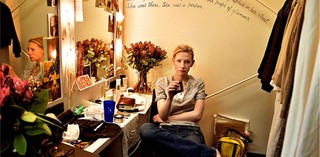
William Yang, Australia b.1943 / Cate Blanchett. The Star in Her Dressing Room. After Hedda Gabler. Wharf Theatre, Sydney 2004 / Digital print / Courtesy: The artist / © William Yang / View full image
While a student at the University of Queensland in Brisbane, William Yang wrote and directed theatre productions and began taking photographs. He started photographing architecture, and then turned his camera to people, which is when he found his true passion.
In order to make a living as a photographer, Yang began his career taking candid shots of ‘beautiful people’ at parties and events for the social pages of newspapers and magazines. Yang rubbed shoulders with celebrities, artists and performers, and discovered that the camera was an entry pass to an exclusive backstage world populated by kindred spirits, with whom he formed close bonds.
Yang’s prolific social portraiture includes some of the most prominent people in Australian theatre, film, art and literature, with more than a few international cameos. A much-loved and trusted figure who is embedded into Sydney’s social fabric, Yang’s images are taken with the razzle-dazzle of celebrity, but little of its conceit.
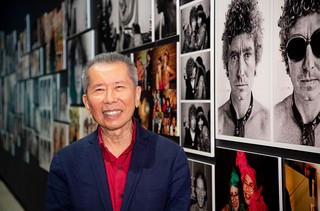
William Yang with the social portraits at the opening of ‘Seeing and Being Seen’ / View full image
Within the show is a salon hang ‘social wall’ which long predates Instagram. The selection of faces is reflective of Yang’s friendships and his abiding passion for the arts — they embody both the glamour of celebrity and provide behind-the-scenes insights into the lives of artists from a range of backgrounds. With a camera around his neck, Yang came to understand that he could ask his subjects a series of personal questions, and they would reveal more of themselves than they would during the course of casual conversation.
Representing only a fraction of Yang’s social photography, these images capture the almost compulsive nature of his passion for recording people and places. His gift for eliciting the essence of his subjects through portraiture — whether candid or posed — has been apparent his entire career.
Rosie Hays is Associate Curator, Australian Cinémathèque, QAGOMA, and Curator of ‘William Yang: Seeing and Being Seen’
David Gulpilil
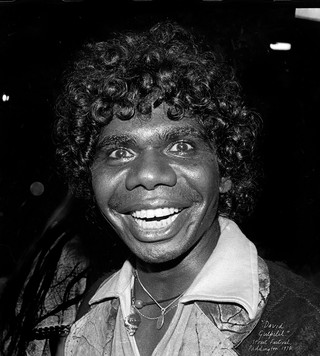
William Yang, Australia b.1943 / David Gulpilil 1978 / Inkjet print on solid substrate Kapaplast / Collection: The artist / © William Yang / View full image
Linda Jackson and Jenny Kee

William Yang, Australia b.1943 / Linda Jackson and Jenny Kee 1979 / Inkjet print on solid substrate Kapaplast / Collection: The artist / © William Yang / View full image
Richard Neville and Bob Geldof
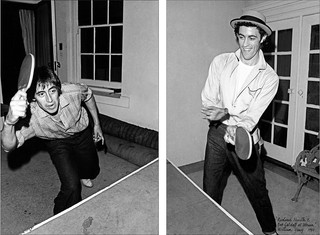
William Yang, Australia b.1943 / Richard Neville and Bob Geldof at Wirian 1980 / Inkjet print on solid substrate Kapaplast / Collection: The artist / © William Yang / View full image
Brett Whiteley

William Yang, Australia b.1943 / Party at the Whiteleys’, Lavender Bay 1982 / Inkjet print on solid substrate Kapaplast / Collection: The artist / © William Yang / View full image
Max Dupain

William Yang, Australia b.1943 / Max Dupain. Studio 1991 / Inkjet print on solid substrate Kapaplast / Collection: The artist / © William Yang / View full image
Cate Blanchett, Catherine McClements and Gillian Jones
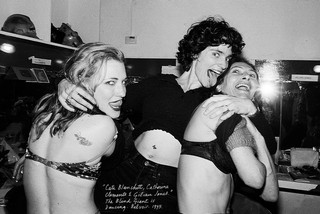
William Yang, Australia b.1943 / Cate Blanchett, Catherine McClements and Gillian Jones.
The Blind Giant is Dancing. Belvoir 1995 / Inkjet print on solid substrate Kapaplast / Collection: The artist / © William Yang / View full image
Ben Law
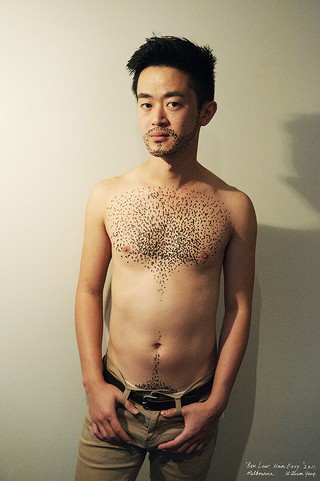
William Yang, Australia b.1943 / Ben Law Hair Envy 2011 / Inkjet print on solid substrate Kapaplast / Collection: The artist / © William Yang / View full image
Featured image detail: William Yang Cate Blanchett. The Star in Her Dressing Room. After Hedda Gabler. Wharf Theatre, Sydney 2004

